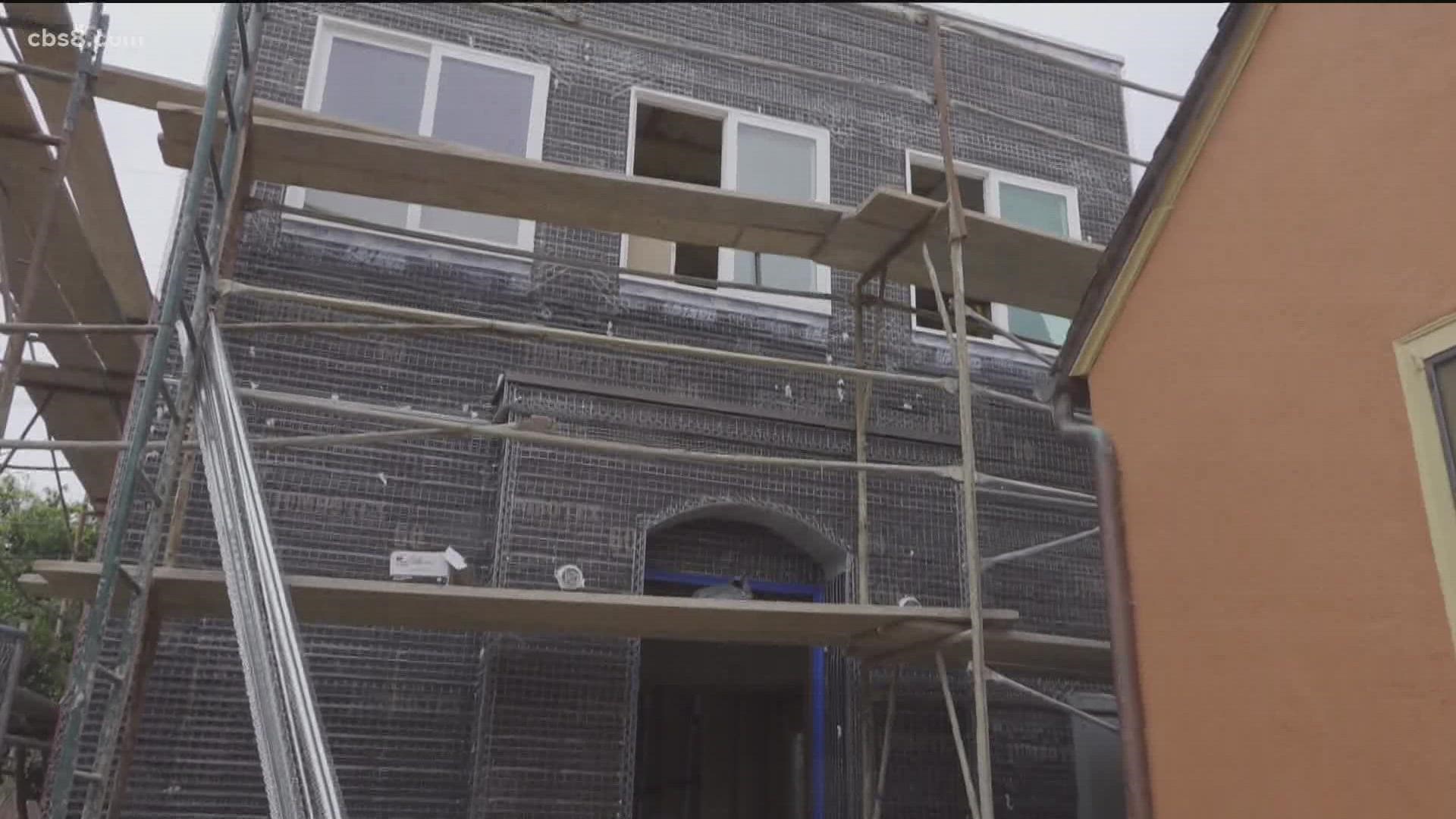SAN DIEGO — Upset at the pending construction of multiple Accessory Dwelling Units (ADU) also known as “Granny flats," Eric Rosenzweig, a College Area homeowner of 23 years says he is frustrated at how much will be built in such a small space.
“They are going to build three two-story buildings behind me for a total of 7 ADUs plus the house across, the street they are going to build six. If you look at the 13 units that will be added here, it will be a 33% increase on this block in this area with no accommodation for sewer, water, trash or parking,” Rosenzweig said.
Rosenzweig, and his neighbors along 69th Street put up signs that say, “NO to backyard apartment buildings” and “Save Our Neighborhoods.”
“Developers are coming in to build ADUs and they are skirting the laws and trying to get around what’s required. It’s fallen on deaf ears, and it’s doesn’t do a thing to solve homelessness,” Rosenzweig said.
In response to the City of San Diego's "Homes for All of Us" initiative that went into effect in February, "Neighbors for a Better San Diego" put a petition together to halt San Diego's zoning changes in transit priority areas, but it failed.
“I think people are going to be fired up about it, and rightfully so until the ordinance is rewritten,” said Paul Krueger of Neighbors for a Better San Diego.
Krueger says his group has submitted a dozen revisions to the city, such as landscape, tree and setback requirements, and those were approved.
A statement from Mayor Todd Gloria's office says:
“We have to build more housing. From addressing homelessness to ensuring our children and grandchildren can afford to stay in this city, the answer is building more housing that San Diegans can actually afford. That means the City must incentivize building affordable housing in locations where it makes sense, such as near transit corridors, and ADUs are an important part of this strategy. The price of not addressing our housing crisis is far higher than the impact of a few additional granny flats on a particular street. Therefore, the City will not be entertaining a request for a moratorium on ADUs.”
Krueger says what's most aggravating about that statement is the idea that these are a few granny flats on a property, and they are not granny flats at all, they are multi-unit ADUs, four, six, eight rental units on a single-family property.
“It can happen anywhere, and you are not going to find out most of the time until there is a tractor in the lot next to you on a house that was bought under false pretenses by somebody who just said they were just going to build a casita,” Krueger said.
Rosenzweig said, for now, to address his privacy concern as several units will be built behind his home, he planted 34 trees. He says his home is a half-mile away from a trolley stop, so the area is not ideal for residents without a car.
“The units will be moderate-income, which is market rate and not even affordable. These are apartment buildings masquerading as ADUs,” Rosenzweig said.
Krueger says the increase of ADUs is chasing out first-time homebuyers.
“This house is off the market, and every place they build one of these, we lose another house that could be somebody’s home,” Krueger said.
Krueger says concerned residents should contact their city council member to let them know how they feel about this kind of development.
WATCH RELATED: Buying a home during a housing bubble? Industry experts weigh in (April 2022).

